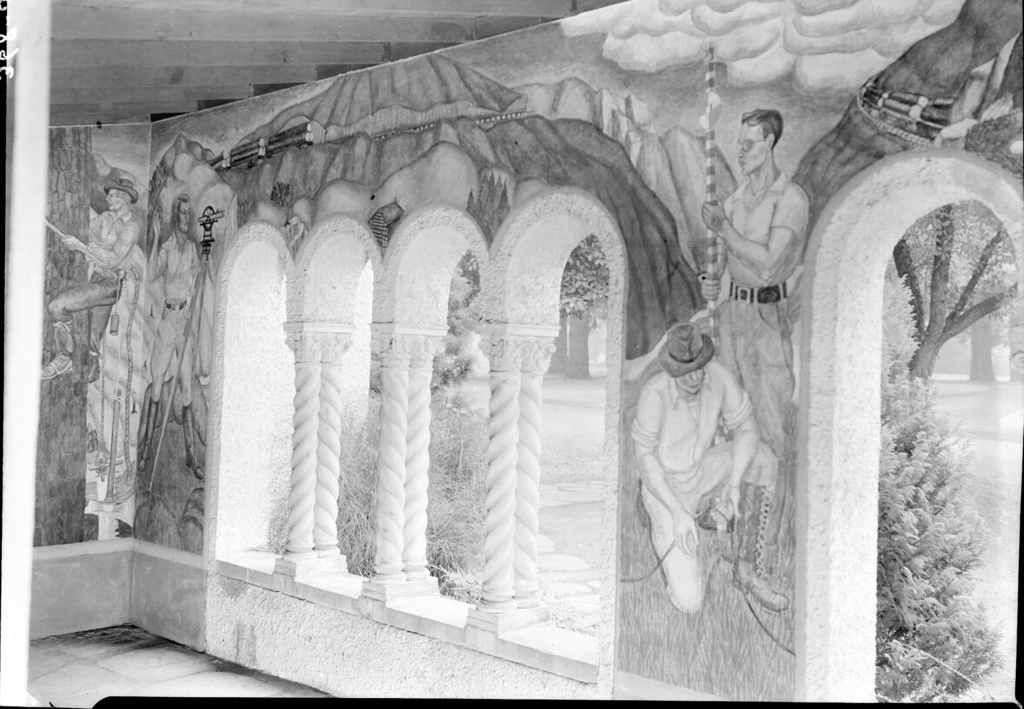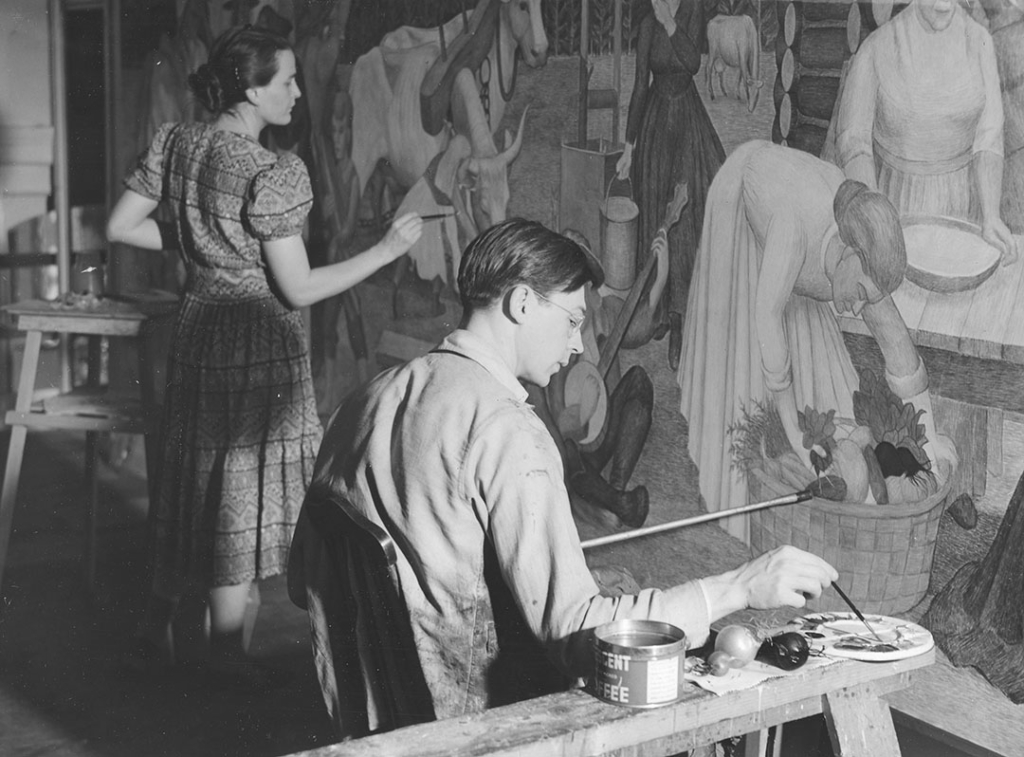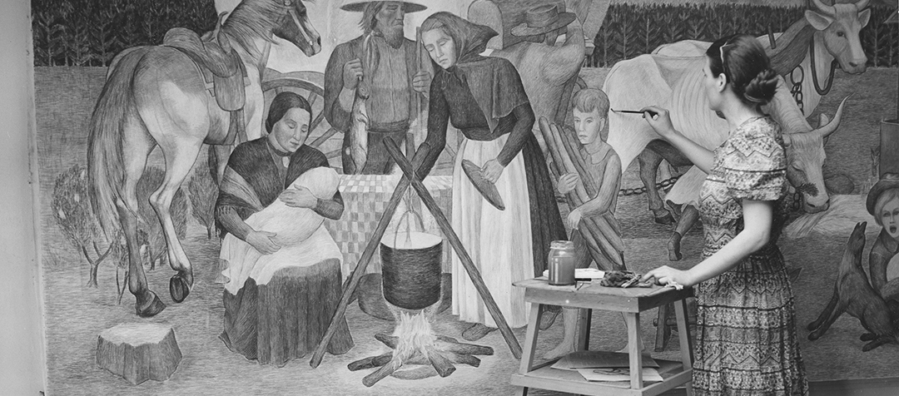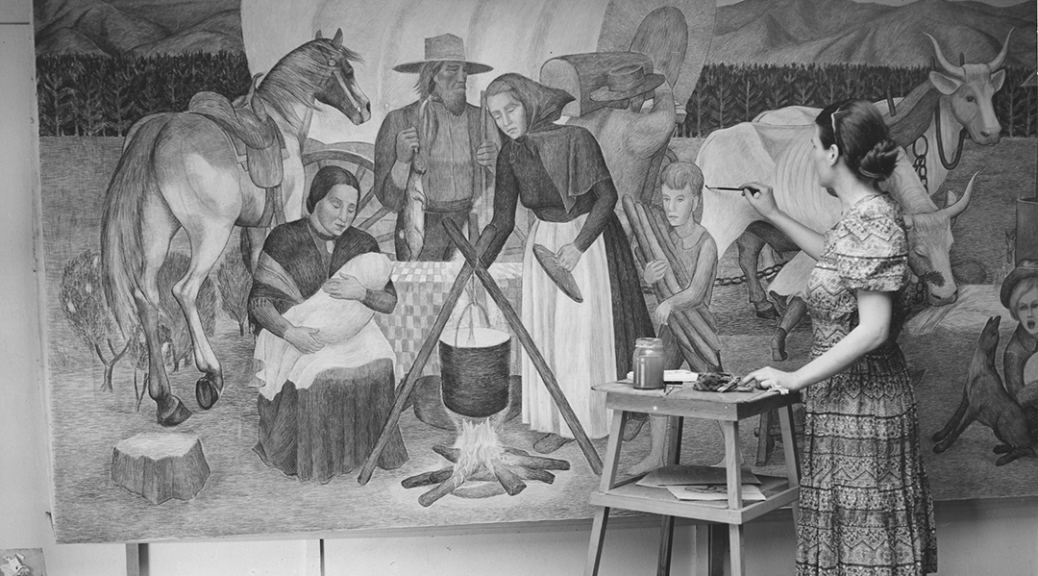The catalogue card that led to four mysterious boxes read simply “Delivery—Forest Service from Washington D.C. 1952.” Inside them was a remarkable discovery, one of many that has made the exhibition Forgotten Stories: Northwest Public Art of the 1930s possible.
During the Great Depression of the 1930s, the U.S. government created the New Deal: a variety of programs to provide jobs to millions of unemployed Americans and get money back into the economy. The jobs ranged from construction to office work but also included programs to employ artists. Across the country, and here in the Northwest, artists were hired to create artworks for a host of tax-supported institutions as well as teach classes, illustrate books, make posters, and a number of other tasks. However, when the U.S. became involved in World War II after the bombing of Pearl Harbor, most government funds were diverted to the war effort. The art projects ended suddenly; artworks were lost and important records discarded.

The remaining fragments of this history in the Northwest were disconnected. A mention of a painting here, a title of an artwork there, artist names but no other details. Some artworks from the projects had government labels to identify them but many were question marks.
Question marks until those four dusty boxes were unearthed from a storage room in 2001. Inside were 2442 negatives, 94 photographic prints, and 112 hand-colored glass lantern slides. Gaps in the numbers on the negatives indicate that they are the surviving fragment of a much larger body of images numbering over 4400 negatives in all. The images document the activities of the Works Progress Administration (WPA) in Oregon, everything from Parks and Recreations programs and citizenship classes to construction and agricultural projects.
They also include a substantial number of images from the Oregon Federal Art Project (FAP): artists at work, exhibitions, classes in progress, and image after image of missing artworks. They have helped identify existing works and indicate there are many more to be found. They have put faces to artist names. They have pinpointed the locations of murals and helped uncover works that had disappeared behind layers of paint, furniture, or new construction. For the most part, the photographers who took these images are unknown though Oregon FAP records include the names of three photographers who may have taken some of these photographs: Adrian Dornbush, Mr. McIntosh, and Sam Ventura.
And they led to another surprise. Written on the borders of some of the negatives were additional numbers in a distinctive format. The graduate student who was helping catalogue the negatives held the key. From her thesis research she recognized them as the identifiers of work by none other than the prominent American photographer Minor White. They helped her uncover the roots of his interest in photography as an amateur member of the Oregon Camera Club in Portland, Oregon and turned out to be examples of his earliest professional work as a photographer for the Oregon WPA. The documentary style pictures found among these negatives represent the starting point for White’s trajectory to become one of the most important photographers of the 20th century.

Thanks to a grant from the Henry Luce Foundation’s American Collections Enhancement Initiative to the Portland Art Museum, all the images in this important find have been digitized and can be viewed by appointment at the museum’s Crumpacker Family Library. Another small group of these negatives were found in the Multnomah County Library John Wilson Special Collections. These too have been digitized and are available online (HERE).
A number of the artworks that came to light through these negatives will be on view in the Forgotten Stories exhibition and many more wait to be rediscovered. Keep your eyes open in your children’s schools, your local post office, and government buildings and you may make uncover the next forgotten story. Please tell me when you do!
Curious to learn more about this important discovery? Check out the essay “Origins of the Artist: A New Look at Minor White’s Formative FAP Years” by Tiffany Stith Cooper in the book that accompanies the exhibition New Deal Art in the Northwest: The WPA and Beyond, available now in the TAM Store.

